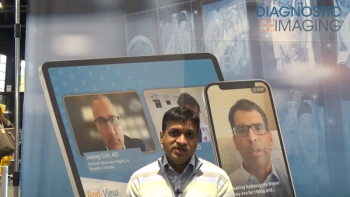
Regulation: the case for global harmony
Congress is scared. It should be. In deference to a global economy, U.S. safety regulators have allowed in tainted pet food, medical supplies, toothpaste, and toys. Now Congress is getting tough. Unfortunately, it’s planning a solution that has a much simpler fix.
Congress is scared. It should be. In deference to a global economy, U.S. safety regulators have allowed in tainted pet food, medical supplies, toothpaste, and toys. Now Congress is getting tough. Unfortunately, it's planning a solution that has a much simpler fix.
Legislators are considering legislation, the FDA Globalization Act of 2008, which would include new regulations requiring inspections of medical imaging equipment and other healthcare devices before they can be sold in this country. This would be an excellent idea, if only such new regulations were necessary. Effective and powerful regulation already has been developed by the International Organization for Standardization (ISO).
In testimony delivered May 14 on Capitol Hill, Medical Imaging & Technology Alliance representative Elisabeth George argued that the goals of Congress could be achieved by mandating ISO 13485 certification rather than instituting new inspections.
Published in 2003, this standard sets requirements for a comprehensive management system that rules the design and manufacture of medical devices. It is similar to the widely recognized ISO 9001 but differs primarily in that it does not require manufacturers to demonstrate "continuous improvement." Instead, they must show that their manufacturing practices abide by a quality system that is implemented and maintained.
George, a MITA board member who serves as vice president of quality, regulatory, sustainability, and product security at Philips Healthcare, argued that this is really all we need. She proposed that the FDA be allowed to use the annual inspections of facilities by international quality and safety officials as part of the ISO 13485 standard, noting that these are virtually identical to inspections needed for compliance with FDA Quality Systems Regulations.
In a world of finite resources, U.S. residents will not benefit from newly hatched regulations because foreign-based manufacturers will have difficulty implementing them and U.S. regulators will have trouble enforcing them. And the problems might not end there. MITA claims the proposed legislation would require new inspections for medical device modifications, along with mandatory registration and inspection of each component and the imposition of significant new fees. These measures would place an unfair burden on domestic medical imaging manufacturers and could stall delivery of improved technology to the U.S. healthcare system, George said.
Following the ISO 13485 standard would ensure the safety of medical imaging technology and eliminate duplicative and unnecessary provisions in the current draft of legislation, she said.
It's hard to argue with that logic. Hopefully, Congress will not try.
Newsletter
Stay at the forefront of radiology with the Diagnostic Imaging newsletter, delivering the latest news, clinical insights, and imaging advancements for today’s radiologists.



























